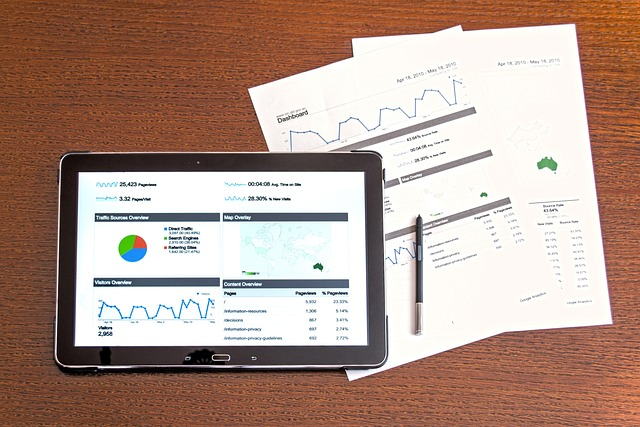Crunching numbers, analyzing data, and keeping a close eye on various metrics—it’s all part of the game in today’s data-driven marketing world. But how can you be certain you’re focusing on the right metrics to drive success for your business? Enter the realm of Key Performance Indicators (KPIs) in marketing—the secret weapon to unlocking your campaign’s true potential and propelling your business forward.
In this blog post, we’ll delve into the world of marketing KPIs and explore how they can help you track your effectiveness, make data-driven decisions, and fine-tune your strategies for better results. So buckle up and get ready to unlock the secrets of what are KPIs in marketing!
Short Summary
Understanding and tracking Key Performance Indicators (KPIs) in marketing is essential for successful campaigns.
Essential KPIs such as CAC, CLV, and ROMI provide insights into the effectiveness of campaigns to maximize ROI.
Conversion Rate & Customer Retention are key metrics used to measure a business’s ability to convert leads & maintain customer loyalty.
Understanding Key Performance Indicators (KPIs) in Marketing

In the ever-evolving landscape of marketing, it’s vital to have a clear understanding of the metrics that matter most. Key Performance Indicators (KPIs) in marketing serve as quantifiable values that help you monitor the progress of your marketing campaigns across various channels. By grasping the significance of these KPIs, you can track your marketing efforts’ effectiveness, make well-informed decisions, and tweak strategies for improved outcomes. One key performance indicator to pay close attention to is the conversion rate, which measures the effectiveness of your marketing efforts in turning leads into customers.
Imagine steering a ship without a compass, curious about where the winds of fortune might lead you. That’s what it’s like navigating the world of marketing without KPIs. By keeping a keen eye on these metrics, your marketing team can ensure they’re on the right course, capitalizing on opportunities, and making adjustments to ensure your campaigns reach their objectives.
Essential Marketing KPIs for Success

When it comes to achieving success in marketing, three essential KPIs stand out: Customer Acquisition Cost (CAC), Customer Lifetime Value (CLV), and Return on Marketing Investment (ROMI). By understanding and tracking these KPIs, you’ll be better equipped to allocate budgets, prioritize marketing efforts, and ultimately drive business growth.
These KPIs provide a clear picture of how effective your marketing efforts are, and how much value they are generating for your business. With this information, you can make informed decisions about where to invest your resources and how to optimize your campaigns for maximum ROI.
Customer Acquisition Cost (CAC)
Customer Acquisition Cost (CAC) is a vital metric that quantifies the resources required to convert a lead into a customer. It takes into account the total expenditure on sales and marketing needed to acquire a new customer, including marketing campaign costs. In essence, CAC helps you evaluate the efficiency of your marketing campaigns and allocate budgets accordingly.
By keeping a close eye on your CAC, you can gain valuable insights into the effectiveness of your marketing campaigns and identify areas for improvement. A high CAC could signify that you’re overspending on acquiring customers, while a low CAC indicates that your marketing strategies are working efficiently. This information is crucial for refining your marketing efforts and ensuring you maximize your return on investment.
Customer Lifetime Value (CLV)
Customer Lifetime Value (CLV) is another essential marketing KPI. It estimates the total revenue generated by a single customer over their relationship with your business. By calculating this metric, businesses can determine marketing budgets and prioritize customer retention initiatives.
CLV is also useful for evaluating the long-term value of your customers. A high CLV indicates that a customer is likely to generate significant revenue for your business over time, while a low CLV suggests that the customer may not be worth the investment in marketing efforts.
By understanding and leveraging CLV, you can make informed decisions about where to allocate your marketing budget and focus your customer retention strategies.
Return on Marketing Investment (ROMI)
Return on Marketing Investment (ROMI) is a metric used to assess the success of marketing campaigns by comparing the generated revenue to the associated costs. It is one of the valuable marketing key performance indicators in determining future marketing strategies and budget allocation. By tracking ROMI, you can evaluate the effectiveness of your marketing campaigns and make data-driven decisions about where to invest your marketing budget.
Calculating ROMI involves subtracting marketing expenses from sales growth and then dividing that by marketing costs. A high ROMI indicates that your marketing campaigns are generating significant returns, while a low ROMI suggests that your marketing efforts may need to be reevaluated. By keeping a close eye on ROMI, you can identify which marketing campaigns are yielding the best results and allocate your resources accordingly.
Sales and Lead Generation KPIs

When it comes to driving business growth, Sales and Lead Generation KPIs play a crucial role. These include Sales Revenue, Marketing Qualified Leads (MQLs), and Sales Qualified Leads (SQLs).
By monitoring these KPIs, businesses can evaluate their lead generation efforts and sales pipeline processes, ensuring they stay on track to achieve their goals.
Sales Revenue
Sales Revenue is the income generated from the sale of goods or services and is recognized on the income statement for the period of sale. It is a key metric for assessing a business’s financial performance and tracking business growth trends. By comparing the revenue generated across different periods, you can identify areas of improvement and areas of success, helping you make informed decisions about your business strategies.
In addition, sales revenue can be leveraged to establish personalized goals for team members by assigning individual objectives to each member of the sales and marketing team. This can incentivize team members to reach their goals and enhance overall performance, ultimately driving business growth.
Marketing Qualified Leads (MQLs)
Marketing Qualified Leads (MQLs) are prospective customers that have been evaluated by the marketing team and meet the criteria required to be passed on to the sales team. They are individuals who have demonstrated interest in a brand by navigating their website and completing an online form, and have been identified as being more likely to purchase. MQLs play an important role in recognizing prospects who are more apt to convert, allowing your marketing team to focus their efforts on high-quality leads.
By tracking MQLs, businesses can not only identify potential customers who are more likely to convert, but also optimize their marketing efforts to target the right audience through various marketing channels. This can lead to more efficient marketing campaigns, higher conversion rates, and ultimately, increased revenue for your business.
Sales Qualified Leads (SQLs)
Sales Qualified Leads (SQLs) are a metric used to assess the performance of the sales pipeline and to evaluate lead conversion processes. These are prospective customers who have met the criteria to be considered ready for a conversation with a member of your sales team. By assessing the number of leads that are converted to sales, you can identify the strengths and weaknesses of your lead generation and sales pipeline processes.
Monitoring SQLs provides valuable insight into the number of leads that are engaging with your sales team. This information can help you identify areas for improvement in your sales process, ultimately leading to better lead conversion and increased revenue.
Digital Marketing KPIs

In the digital age, businesses must keep a close eye on Digital Marketing KPIs to optimize their online presence and drive growth. Key KPIs in this domain include Website Traffic, Organic Traffic and Keyword Performance, and Social Media Engagement.
By tracking these metrics, businesses can ensure their digital marketing efforts are bringing in the desired results.
Website Traffic
Website traffic is a metric that quantifies the number of visitors to a website over a specified period of time. It is an essential indicator of a website’s performance and can be evaluated in terms of visits or sessions. Monitoring website traffic can help you measure the success of your SEO and social media campaigns, as well as identify areas for improvement.
By analyzing website traffic data, you can pinpoint which pages are performing well and which are not performing as anticipated. This can help you identify areas where modifications can be made to enhance your website’s performance and improve your overall digital marketing strategy.
Organic Traffic and Keyword Performance
Organic traffic pertains to the flow of visitors to one’s website coming from free search engines. Examples of this type of search engine are Google, Yahoo and Bing. By monitoring organic traffic and keyword performance, businesses can refine their SEO strategies, monitor keyword rankings, and optimize their website for search engines.
Leveraging SERP tracking software can help businesses track their SERP rankings on a daily basis, allowing them to identify areas for improvement and optimize their SEO efforts.
By implementing search engine optimization techniques, such as optimizing website content for relevant keywords, improving website loading speed, and creating backlinks, businesses can increase organic traffic and achieve higher search engine rankings.
Social Media Engagement
Social media engagement is a metric that measures user interaction with a brand’s social media accounts and content. This includes likes, comments, and shares, and can differ depending on the platform. Social media engagement is a key indicator of the success of social media strategies, helping businesses evaluate their social media campaigns and build brand awareness and trust.
By monitoring social media engagement metrics, businesses can gain valuable insights into how customers interact with their content and how effective their social media campaigns are. This information can be leveraged to inform future campaigns, optimize social media content, and ultimately drive growth and engagement for the business.
Email Marketing KPIs

In the realm of digital marketing, email marketing remains a powerful tool for reaching and engaging with customers. Key Email Marketing KPIs, such as Open Rate and Click-Through Rate (CTR), help businesses measure the success of their email campaigns and identify areas for improvement. Ensuring their messages are hitting the mark and driving results is essential for any successful email marketing strategy.
Open Rate
Open Rate is a crucial KPI for determining the effectiveness of email subject lines and overall email marketing strategy. It measures the percentage of recipients who open the emails sent to them, giving businesses insights into which subject lines are successful and which are not, as well as which content is resonating with their audience.
By monitoring and analyzing Open Rates, businesses can optimize their email subject lines to increase open rates and improve overall campaign performance. Strategies such as personalization, testing of subject lines, and optimization of email timing can all contribute to higher open rates and more successful email marketing campaigns.
Click-Through-Rate (CTR)

Click-Through-Rate (CTR) is another important email marketing KPI that measures the percentage of email recipients who clicked on a link within the email. By evaluating CTR, businesses can gauge the success of their email content and calls-to-action, ensuring their messages are engaging and driving the desired results.
By comparing CTR across different campaigns and content types, businesses can identify which content resonates with their audience and optimize their email campaigns for improved outcomes. This can lead to more efficient email marketing efforts, higher engagement rates, and ultimately, increased revenue for the business.
Conversion and Retention KPIs
The ultimate goal of any marketing campaign is to convert leads into customers and retain those customers for the long term. Conversion and retention KPIs, including Conversion Rate and Customer Retention, help businesses measure their ability to achieve these goals and maintain long-term relationships with their customers.
These KPIs provide valuable insights into the effectiveness of a company’s marketing efforts and can be used to identify areas of improvement. By tracking these metrics, businesses can make informed decisions about their marketing strategies.
Conversion Rate
Conversion Rate measures the percentage of users who complete a desired action, such as making a purchase or signing up for a newsletter. This critical KPI helps businesses assess the effectiveness of their marketing campaigns and identify areas for improvement.
A high conversion rate indicates that your marketing campaigns are effectively driving users to complete the desired actions, while a low conversion rate may suggest that your campaigns need to be reevaluated and optimized. By monitoring and improving conversion rates, businesses can ensure that their marketing efforts are yielding the desired results and driving growth.
Customer Retention
Customer retention is a vital KPI for evaluating a business’s ability to keep customers engaged and loyal. High customer retention rates indicate that a business is successfully maintaining long-term customer relationships, while low retention rates may signal the need for improvements in customer service and experience.
By tracking customer retention, businesses can identify areas for improvement in their customer service processes and cultivate a customer-centric culture. Implementing strategies such as rewards and loyalty programs, personalizing customer experiences, and providing exceptional customer service can all contribute to increased customer retention and long-term business success.
Summary
In today’s data-driven marketing landscape, understanding and tracking the right KPIs is essential for success. By focusing on crucial metrics such as CAC, CLV, ROMI, Sales Revenue, MQLs, SQLs, Website Traffic, Organic Traffic, Social Media Engagement, Open Rate, CTR, Conversion Rate, and Customer Retention, businesses can make data-driven decisions and optimize their marketing efforts for maximum impact.
Don’t leave your marketing success to chance—start tracking and analyzing these KPIs today and unlock the secrets to achieving your marketing goals in 2023 and beyond!
Frequently Asked Questions
What is an example of a KPI in marketing?
KPIs, or key performance indicators, in marketing measure the success of campaigns and activity related to customer acquisition. An example of a KPI in marketing would be the website bounce rate, which measures the percentage of visitors who leave after viewing only one page on a website.
What is KPI and examples?
KPIs are measurable indicators that allow organizations to assess the success of their strategies and activities. Examples of KPIs include customer satisfaction, sales conversion rate, customer retention rate, time to market, and revenue growth rate.
By monitoring these metrics, businesses can optimize performance and achieve their goals.
What are the 5 KPI?
The five most commonly used key performance indicators (KPIs) are customer satisfaction, employee turnover, operational costs, profit margins, and revenue growth. These KPIs can provide insight into the overall effectiveness of a company, helping to evaluate success and identify areas of improvement.
What are the 3 types of KPIs?
Understanding Key Performance Indicators (KPIs) is key to managing any business. There are three main types of KPIs: performance, outcome and process. Performance KPIs measure whether a task was completed efficiently, outcome KPIs measure the success of an activity, and process KPIs track progress over time.
Overall, these metrics enable businesses to set and evaluate goals and ensure objectives are met.
What are the most important marketing KPIs to track?
Tracking marketing KPIs such as Customer Acquisition Cost (CAC), Customer Lifetime Value (CLV), Return on Marketing Investment (ROMI), and Conversion Rate are essential for understanding the efficacy of your marketing campaigns and maximizing ROI.
These metrics will provide invaluable insight into the effectiveness of your marketing strategy and help inform future decisions.


